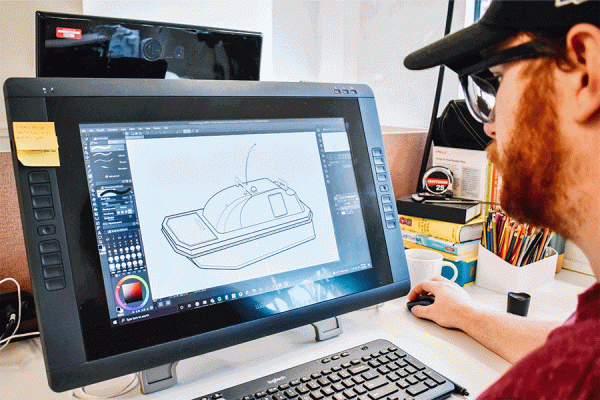Nearly 80 years after Andrew Higgins put New Orleans on the map with his innovative Higgins boats that helped turn the tide in World War II, a new initiative has the potential to once again transform the New Orleans shipbuilding industry. The University of New Orleans Boysie Bollinger School of Naval Architecture and Marine Engineering and Scale Innovations, a New Orleans industrial design firm, are rethinking work vessels by designing and engineering an electric boat.
Electric vehicles are a growing form of transportation that are quickly being adopted by manufacturers and consumers worldwide. Electric boats, the newest category in the EV sector, are growing rapidly in the United States with the market projected to double in the next five years.
“Maritime and related industries have been an important part of the New Orleans economy for many years,” said Matt Tarr, vice president for research and economic development at UNO. “Further developing new technologies to keep our region nationally and internationally competitive is critical for our economic growth. Electric boat technology is one key development that can continue to support sustainable economic development around our maritime sector and stimulate job growth in the region.”
The genesis of this collaboration came in early 2020 when UNO naval architecture and marine engineering student Nigel Watkins was working as an intern with Scale Innovations in a position funded by the National Center for Advanced Manufacturing.
Watkins had previously completed a summer internship at an electric yacht company in Europe, and he believed in the possibility that electric boats could be viable in New Orleans. This gave the Scale team a vision that electric boats could be used for surveying and conservation, rather than just recreation.
This project comes at a time with increased demand for work vessels due to a large renewable energy transition in the Gulf Coast region and rapid growth in the coastal restoration industry. Offshore wind initiatives are already at play in the New Orleans area, with wind farms beginning to develop in the next few years.
According to economic data from the National Oceanic and Atmospheric Administration, marine construction is currently the fastest growing part of the Louisiana marine economy. A key component of these projects includes surveying. Projects such as the National Strategy for Mapping, Exploring, and Characterizing the United States Exclusive Economic Zone could greatly benefit from electric autonomous vehicles in the goal to fully map U.S. deep waters within the next nine years.
Scale Innovations is currently working with stakeholders to develop an electric work boat concept for coastal Louisiana. The team will then bring the concept design to the Bollinger School of Naval Architecture and Marine Engineering to engineer the boat. The project is being funded by the UNO Office of Research.
“This project provides us the chance to explore the impacts of an all-electric propulsion system on the overall design of the boat,” said Brandon Taravella, professor of naval architecture and marine engineering. “It will also give us the opportunity to engage students in state-of-the-art concepts in naval architecture and marine engineering.”
In addition to improving the way we work on the water, Scale Innovations and UNO expect the project to elevate what “designed and built in New Orleans” can mean.
“This leadership of big thinking is what once put New Orleans on the world stage with the invention of the Higgins boat,” said Lyle LeBlanc, founder of Scale Innovations. “If all goes according to plan, it will be what keeps it there.”





